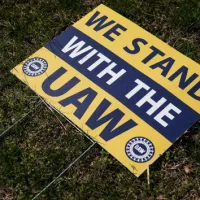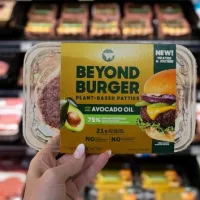 RalphCoulter/iStock Editorial/Thinkstock(WASHINGTON) — The U.S. Department of Transportation announced its next generation of rail tank cars traveling with flammable liquids Friday morning in a press conference in Washington, D.C.
RalphCoulter/iStock Editorial/Thinkstock(WASHINGTON) — The U.S. Department of Transportation announced its next generation of rail tank cars traveling with flammable liquids Friday morning in a press conference in Washington, D.C.
Amid accidents, derailing train cars and cars catching fire, DOT Secretary Anthony Foxx and Canada’s Minister of Transport Lisa Raitt revealed a series of stronger and safer rail tank cars both agencies argue will prevent these accidents from happening again, and if an accident does happen, to mitigate the damage.
The new TC-117 standard will better protect cars transporting crude oil by all railway companies in both Canada and the United States. The cars will now be jacketed and constructed with thicker steel, thermal protection, a full head shield, top fitting protection and a new bottom outlet valve.
The new cars will also come equipped with, or be retrofitted with, ECP breaks. ECP breaks can prevent cars from slamming into one another.
Foxx said the ECP break technology is “proven” and can be the difference between a contained fire and a catastrophe.
Train cars used for transporting flammable liquids built on or after Oct. 1, 2015 will be built to the new TC-117 standards; cars built before then will either be replaced or retrofitted within the next five years.
Secretary Foxx said that, “by April 1, 2020 all rail cars transporting crude will be retrofitted or phased out.”
The older, most unreliable cars will be retrofitted or phased out by as soon as 2017.
“About 99.9 percent of the time, those transporting crude oil reach their destination safely,” Foxx said. “But 99.9 percent isn’t enough.”
In 2013 in Lac Mégantic, Quebec a train carrying crude oil derailed and crashed, killing 47 people. This was Foxx’s first day on the job as Secretary.
Since that incident, Foxx and Raitt have teamed up to improve the quality of cars carrying crude oil.
Both Foxx and Raitt note that years ago, the transportation of crude oil wasn’t in such demand. But with growth of crude oil comes growth of train cars carrying it.
“Since 2008, there has been a 4,000 percent increase of the transport of crude oil via rail,” Foxx said.
Raitt added, “[The] truth of the matter — this does not end here. We will continue to look for more ways to protect everyone” involved in transporting crude oil, and citizens surrounding railroads.”
Until cars are retrofitted or phased out, Raitt said that she has lowered the maximum speed limit when trains are traveling through populated areas so that they won’t travel faster than 40 mph.
Both Foxx and Raitt note accidents could happen within the next five years — during the transition — but say they are seeking to strike a balance, and working as fast as they can.
This change in rail cars is “more aggressive to manufacturers than some of them would like,” but they realize the importance of safety.
“We can never undo the damage done in Lac Mégantic, Quebec,” Raitt said, adding they can try to improve the standards and honor those lives lost with this new technology.
Follow @ABCNewsRadio
Copyright © 2015, ABC Radio. All rights reserved.















